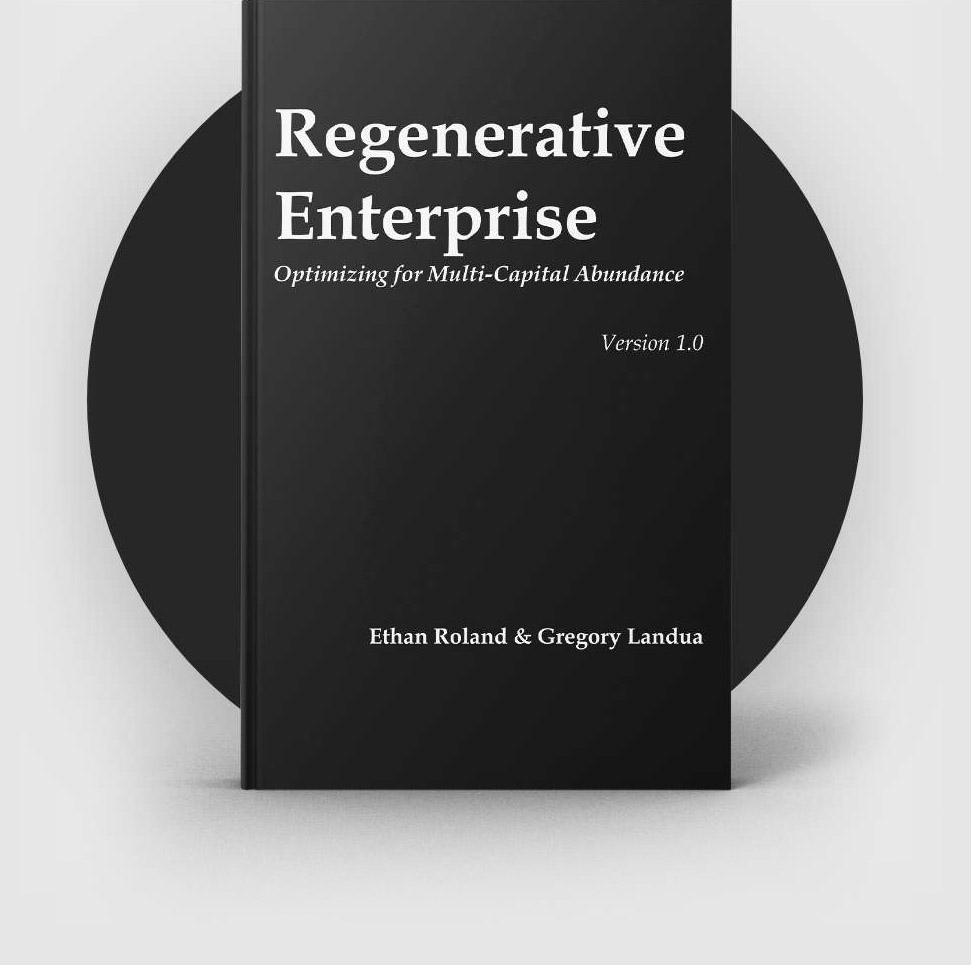by Carol Sanford
Phase One: Discern a Living Structured Whole and Avoiding “Part” Thinking
How to know if you are doing something else and calling it Regeneration!
Last month I began a series of blogs on the concept of Regeneration. The idea of Regeneration has a very long history of practice. It comes out of the concept of Living Systems Thinking. Charles Krone, one of the pioneers of Procter and Gamble’s revolutionary work design, developed something called framework-thinking, which promotes the ability to see wholes at work. The one used here, he called Levels of Work, employed by all P&G Soap employees to understand markets, customers and even soap making, as a living process. The Levels of Work framework enables our understanding of the different kinds of work we take on, in business and other activities. Using it well utilizes a hierarchy of work, some with a better return for innovation, some better for problem solving. Each activity requires different natures or work. He called the base of the hierarchy “operational work,” getting things done and done well. The next level is “maintain or sustain,” how to keep something at its highest level of functioning in a changing ecosystem. “System evolution” level increases the capability of a complex system to evolve over time. Finally, “regeneration work” builds the capacity of wholes to, on an ongoing basis, uniquely bring new value from its role and contribution. All of these levels are needed, but much is lost if we cannot tell where we are, or worse, fool ourselves. I see this happen with innovation often. The situation required regenerative work, but often used maintain problem solving tools.
The first blog in this series was an overview of the history, including my forty years with the concept, and the etymology of the term Regeneration as an approach to change and health. When one sets out to work Regeneratively, it is with the intention of finding the full potential of some effort, one that will proceed through seven phases of thinking and acting, where each phase builds and interacts with the others. The use of phases instead of stages allows you to revisit as you move along. Phase One is the subject of this blog, which offers a more in-depth look as the first requirement to even begin thinking about working Regeneratively. You begin with discerning a living structured whole.
When my daughter graduated from Swarthmore College, Tim William, now a professor emeritus, granted her a Distinction in Biology. She had refused to dissect animals and insects, still graduating Phi Beta Kappa, and instead studied them in motion, sometimes with imaging equipment. In appreciation of her wisdom, he offered his own relevant experience in the Peace Corps as a teacher in Zimbabwe. He had invited the young village students to capture frogs and bring them back in jars he provided. He proceeded to show them how to kill the frogs with chloroform using his frog. The children froze and then screamed, all running out of the makeshift classroom.
Very shortly, the local Chief emerged and asked why he was teaching the children of the village to kill frogs. Tim explained that is was just a necessity of being able to cut them up to be able to understand a frog.
The Chief, with a toothless grin, got down in a squat position and began to leap around croaking, in what Tim reported was a very accurate depiction of frog behavior. When the Chief rose, he said to Tim, “You cannot understand a frog, without a WHOLE frog doing what frogs do.” He made Tim squat and hop and “be” a frog. Smiling broadly as he walked away, the Chief added, “You have to feel the whole frog in motion, to truly understand.” He had also removed the lids and gleefully watched all the frogs hop back into the brush.
What is a Living Structured Whole?
Think of the human body, both literally and metaphorically. You know it is a whole for one reason. It has structures, systems and processes of its own.
- It has a self-contained and containing structure. E.g a skeleton.
- It has systemic working systems, which order and organize the working of activity inside the Whole. E.g. digestive, elimination, and cardio-vascular systems.
- The processes it engages in make use of a self-managing open exchange, rather than a closed one. E.g eating is an exchange with other systems, repeating, always with fresh material. Closed systems always require the importation of energy from an external system. An open process can engage in value-adding or value-extracting processes with its ecosystem.
Other examples of wholes with structures, systems and processes that meet these criteria are a Customer, Earth, a Place, or an Employee. They each have a self-contained and containing structure, systemic working systems to manage the recurring working of the whole, and the processes that manage exchanges and fuel.
A Business example: a corporation means “the body of the whole.” Some business units are wholes with their own structures, systems and processes. A school most often is within the larger school system. It operates independently as a whole within a whole.
Why regeneration requires a structured whole?
It is the structures, systems and processes that get regenerated. If it is not a living system, it cannot be regenerated. For example, a curriculum or programs, which are “part” of processing, can be upgraded or refreshed, but not regenerated. In another example, our skeleton can be regenerated, which happens after an accident or bone loss. It is done in the context of the whole body if it is really regenerative, with its unique DNA, in that context and age, and is specific to that person. This happens even beyond the physical, one’s spirit when depressed, for example.
What happens if we don’t start with a whole?
We promote and work from fragmentation like with bones when seen as a “part” of the body, not structuring for a whole. We seek to treat the “parts” as problems in decline and try to stop the decline (i.e. doing not as bad), or we pursue something generically good, which is not matched with the whole that we want to regenerate. E.g., medicine when it is not holistic, or sustainability approaches when practiced as parts of the whole (water, forests separately). The undeveloped mind collapses to perceiving parts. We have to learn to see wholes. In business, it leads to having someone supervise all the parts to bring them together. In medicine, we see one specialist after another for different parts of a subsystem.
How do you discern a whole? How can you avoid fragmentation?
Medicine has been moving toward a holistic view of human health in many quarters. This means working less to find solutions for symptoms and working to see what health creation might look like for the whole human being. How do we work from what makes systems healthy, like the cardiovascular systems, metabolic systems, and circulatory systems, in the context of the whole in which they are nested? Otherwise, it is working with the “parts of a cut up frog” to understand a living frog. It cannot be understood if it can no longer jump and croak. What makes the “being” healthy as a whole, working to create vital structures and systems at the same time through regulation of the processes the person engages in. Fragmentation tends to be our default, and it is often hard to break the habit from out training. Here are some hints.
- Use a living systems framework that evokes questions that helps us understand the working of a particular “whole.” E.g. the Levels of Work Framework I used to create this blog and many other works. A Framework is not the same thing as a model that shows how to replicate an existing pattern. It can be First Principles, like in classical and quantum physics. Frameworks invite the generation of a pattern, in this time and space, rather than follow a preset pattern. We need models for building airplanes, but not businesses, ecosystems or families. A systems framework is a mechanism for questions rather than answers.
For example, all my books are written with a living system framework. The Responsible Business uses a pentad, a five-term framework for looking at an ecosystem’s vitality, viability and evolution. It invites you to use it as a system rather than divided “parts” of the system . The understanding is not the same from one time to another. Rethinking can invite a higher quality of thinking and energy. It shows the connections and relationships.
1. Examine the characteristics of a Whole:
- Ask what structures it contains, as a being or entity. Not all structures are living systems. Neither a ladder nor a building is living.
- What are the systemic systems that keep its life in order?
- What does it exchange with other systems? Are its processes only internal ones or exchange ones? Living processes promote exchange.
2. Avoid:
- Lists! – A quick clue you do not have a “whole.”
- Functions of a whole, like marketing in a business.
A major challenge of our times is the development of a mind that can see wholes and their working, thus overcoming fragmentation of mind and then fragmented initiative on living beings, like Earth.
The next blog is #3, How to See Something Alive and Working Without Cutting It Up Into Fragments Through Dissection. Once you have a whole frog, how do you understand its working?
Save the Date: First Annual Regenerative Business Summit. Oct. 18- 20, 2016. From Friday Evening on 18th to Noon on 20th. Seattle WA. At The Foundry by Herban Feast.

